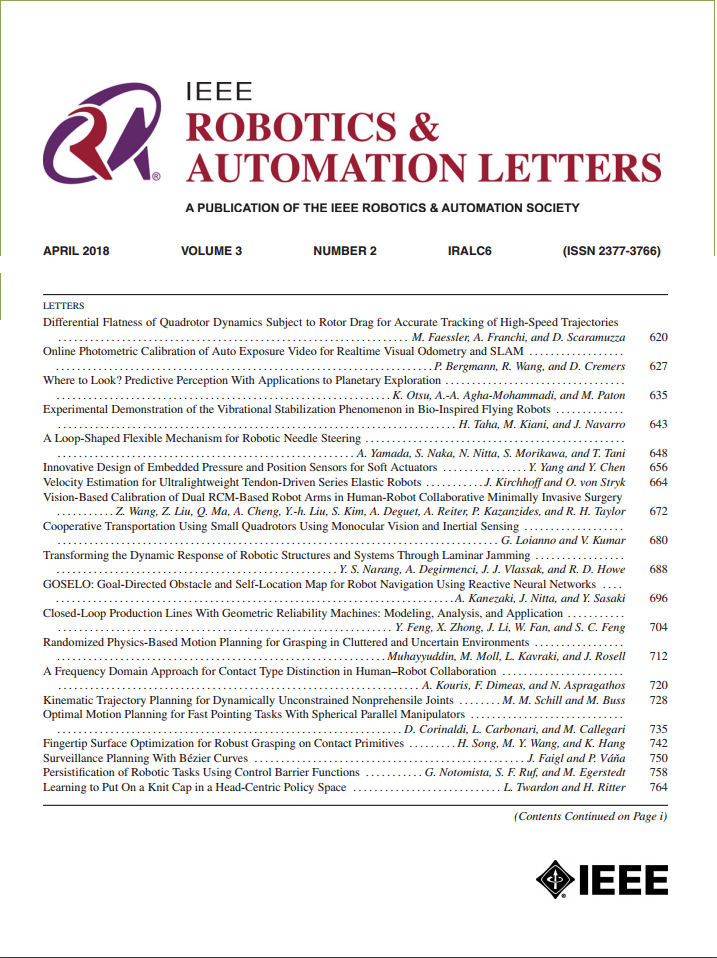开放词汇可解释的轨迹适应
IF 5.3
2区 计算机科学
Q2 ROBOTICS
引用次数: 0
摘要
根据动态情况和用户偏好调整轨迹对于机器人在非专业用户的非结构化环境中运行至关重要。自然语言使用户能够以交互的方式表达这些调整。我们介绍了OVITA,这是一个可解释的、开放词汇的、语言驱动的框架,旨在根据人类指令在动态和新颖的情况下适应机器人的轨迹。OVITA利用多个预训练的大型语言模型(llm)将用户命令集成到由运动规划器或通过演示学习的轨迹中。OVITA使用代码作为由LLM生成的适应策略,允许用户调整单个路径点,从而提供灵活的控制。另一个LLM充当代码解释器,消除了对专家用户的需求,实现了直观的交互。通过广泛的仿真和现实世界环境,在异构机器人平台(如KUKA IIWA机器人操纵器、Clearpath Jackal地面机器人和crazyfly无人机)上进行了涉及时空变化的各种任务,证明了所提出的OVITA框架的有效性和重要性。本文章由计算机程序翻译,如有差异,请以英文原文为准。
OVITA: Open-Vocabulary Interpretable Trajectory Adaptations
Adapting trajectories to dynamic situations and user preferences is crucial for robot operation in unstructured environments with non-expert users. Natural language enables users to express these adjustments in an interactive manner. We introduce OVITA, an interpretable, open-vocabulary, language-driven framework designed for adapting robot trajectories in dynamic and novel situations based on human instructions. OVITA leverages multiple pre-trained Large Language Models (LLMs) to integrate user commands into trajectories generated by motion planners or those learned through demonstrations. OVITA employs code as an adaptation policy generated by an LLM, enabling users to adjust individual waypoints, thus providing flexible control. Another LLM, which acts as a code explainer, removes the need for expert users, enabling intuitive interactions. The efficacy and significance of the proposed OVITA framework is demonstrated through extensive simulations and real-world environments with diverse tasks involving spatiotemporal variations on heterogeneous robotic platforms such as a KUKA IIWA robot manipulator, Clearpath Jackal ground robot, and CrazyFlie drone.
求助全文
通过发布文献求助,成功后即可免费获取论文全文。
去求助
来源期刊

IEEE Robotics and Automation Letters
Computer Science-Computer Science Applications
CiteScore
9.60
自引率
15.40%
发文量
1428
期刊介绍:
The scope of this journal is to publish peer-reviewed articles that provide a timely and concise account of innovative research ideas and application results, reporting significant theoretical findings and application case studies in areas of robotics and automation.
 求助内容:
求助内容: 应助结果提醒方式:
应助结果提醒方式:


